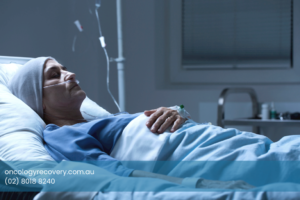During March the global lymphoedema community, medical and non-medical, is collectively raising awareness about this condition that affects millions of people around the world.
This year Lymphoedema Association Australia chose the slogan: “Shine a light on lymphoedema.”
At Oncology Recovery Services Inc. we decided to shine a light on the people in our community who suffer from lymphoedema but remain under-recognised, under-treated and under-researched: the kids, the elderly and people in palliative care.
What is childhood or paediatric lymphoedema?
Lymphoedema is a condition where fluid collects in body tissues and causes swelling. It can occur in people of all ages. In children, lymphoedema is usually caused by a congenital defect such as an abnormal lymphatic system or a blockage in the lymphatic vessels. Radiation treatment for cancer, surgery, trauma, infection, tumors, and chronic venous disease can also cause lymphoedema in children. Symptoms usually include swelling in one or multiple limbs. Treatment typically involves daily use of compression garments, exercise therapy and lymphatic massage therapy to reduce or control the swelling.
Is treating kids with lymphoedema different to treating adults?
Yes.
Firstly, we need to use language they understand when we explain why their body looks, feels and performs differently compared to their friends’. There are various resources available that explain the lymphatic system and its function using graphics designed to suit children. (Check out The Big Book of Lymphoedema by Jacquelyne Todd.)
Secondly, it is important to motivate and support the parents/carers as they can get treatment fatigue too. Without their support and perseverance, consistency of treatment is not possible.
Lastly, but most importantly, treatment should be FUN! This could include:
- using colourful compression garments
- teaching exercises that are enjoyable
- using a variety of equipment including balls, mini trampolines, elastic bands, balance beams etc.
- getting their friends to participate in some of the sessions
- use music that matches their mood on the day
- exercise in water

Is lymphoedema common in elderly people?
Yes. Lymphoedema (in the legs) is extremely common amongst the elderly and remains a widely neglected public health issue. The aging population is very vulnerable to developing lymphoedema which can be caused by a range of factors. These include: immobility or lack of physical activity, poor circulation, comorbidities such as obesity or side effects of certain medications. As we age, our lymphatic system naturally becomes slower, more sluggish and may not function properly, which results in increased swelling.
It is however not only lymphoedema but other forms of (non-cancer related) chronic oedema that is widely seen in this population:
- vascular oedema
- lipoedema
- gravitational oedema
- combination oedema
In addition, diseases of the heart, kidneys or liver are common in the aging population and can cause fluid build-up in the legs leading to chronic oedema.
The medical community as well as family members/carers need to be aware of any signs of leg swelling and initiate early and appropriate management. By delaying or neglecting treatment, we significantly decrease quality of life and put people at risk of serious illness such as infections and hospitalisation.
What to consider when treating chronic oedema in the elderly?
Know the cause of their oedema. As seen above, leg swelling can occur for a variety of different reasons and requires varying treatment accordingly. It is important to liaise with the treating medical team or GP to exclude other forms of oedema before treating the patient for lymphoedema.
Treatment of lymphoedema usually involves compression therapy, lymphatic massage, and exercise. When treating the elderly, choose products that fit their needs and consider their ability to put on garments. Teach self-management strategies such as daily skin care to maintain good skin condition. The older we are, the thinner and more fragile our skin becomes. This will make us prone to tears and put us at risk of infections. Try to involve carers/ family members into the management, for example, by accompanying them on a daily walk or assisting them to perform simple leg exercises in a chair or bed.
Lymphoedema in palliative care patients
People in terminal stages of life are also at risk of developing lymphoedema. This is due to the fact that many of the treatments used to alleviate pain and discomfort can have an adverse effect on the lymphatic system. When the lymphatic system is compromised, fluid can build up in the tissues. Lymphoedema in palliative patients can also be caused by cancer obstructing the lymphatic system or by the side effects of cancer treatments. Cancer treatments such as surgical removal of lymph nodes, radiation or chemotherapy can damage the lymphatic system, causing swelling.

Treating patients in palliative care usually focuses on reducing pain and providing comfort, as poorly controlled symptoms can lead to distress. Therapists need to consider patients’ tolerability to treatment and any comorbidities. Managing lymphoedema in palliative care requires a team approach to enable people to live and die well.
So, this Lymphoedema Awareness Month, let’s shine the light on those living with lymphoedema who we often don’t see and try to make a difference to their lives.
For any questions, please call us on 8018 8240. Our clinicians are trained to treat kids, the elderly and people in palliative care.









